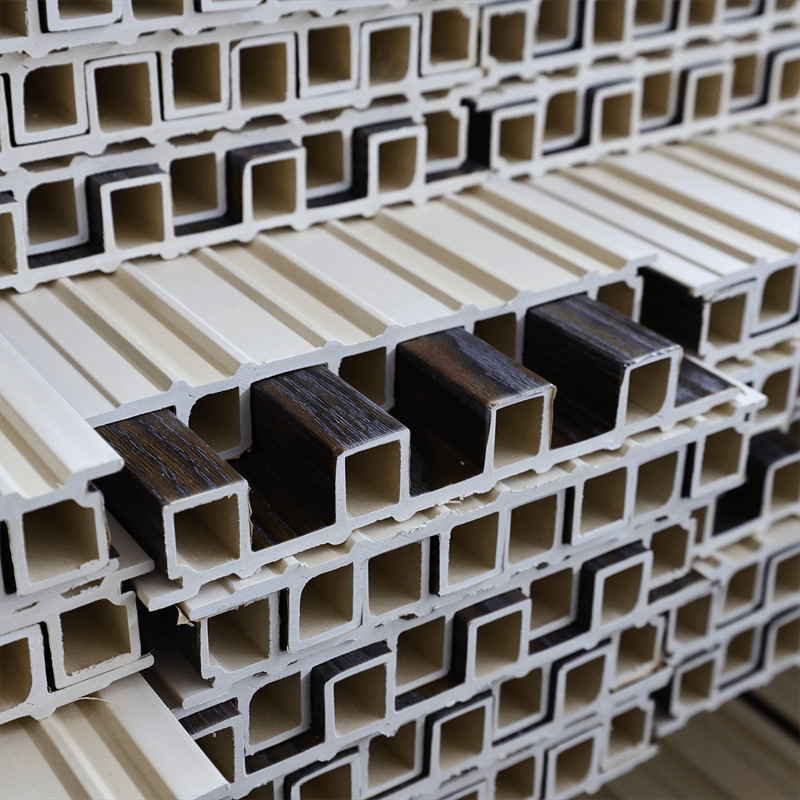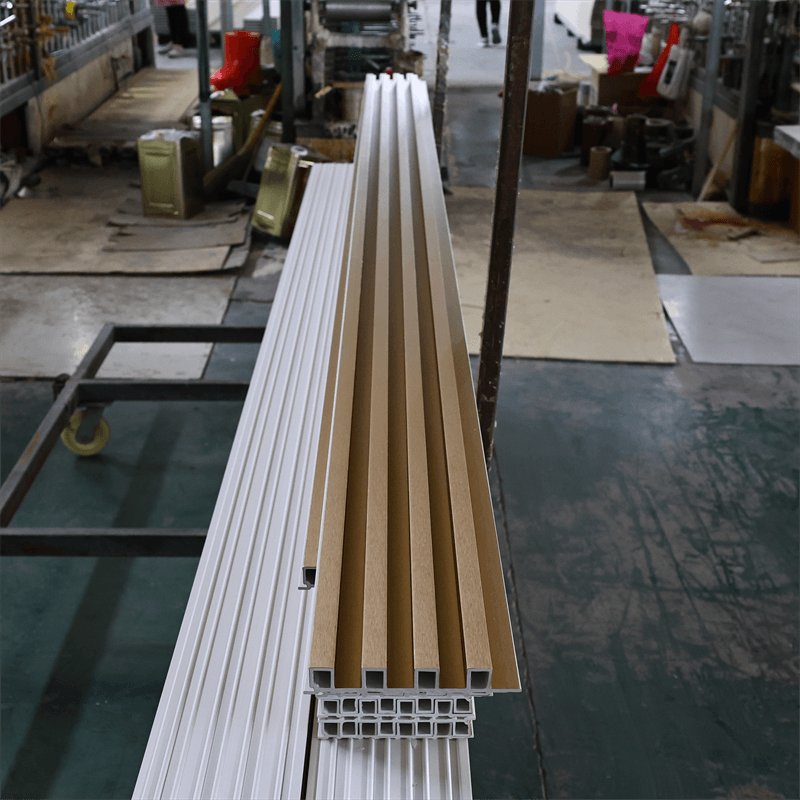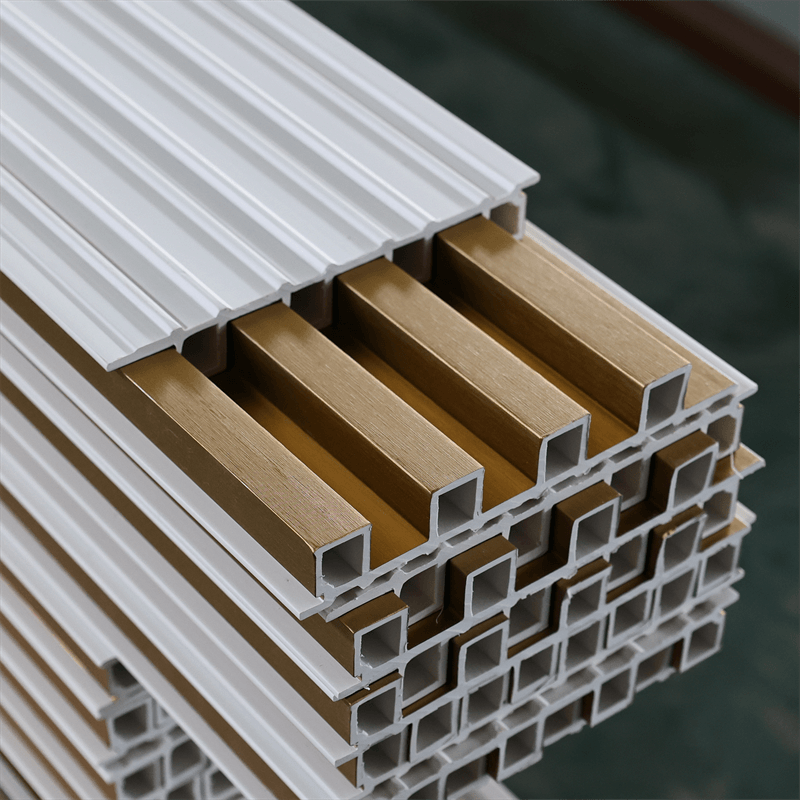1: Introduction to WPC Wall Panels
In recent years, Wood-Plastic Composite (WPC) wall panels have gained significant popularity as a versatile and sustainable alternative to traditional wall cladding materials.
WPC panels are composed of a blend of wood fibers and thermoplastics, resulting in a durable and low-maintenance product.
While their structural properties and ease of installation make them attractive, the color and texture options available for WPC wall panels further enhance their aesthetic appeal.
This essay delves into the diverse array of color and texture options offered by WPC wall panels, exploring their benefits and design possibilities.

2: Vibrant Color Selection
One of the key advantages of WPC wall panels is the wide range of vibrant colors available. Manufacturers offer an extensive palette, ranging from earthy tones to bold and vibrant hues.
Homeowners, architects, and designers can select colors that align with their design vision, complement existing decor, or create striking contrasts.
The ability to choose from various colors allows for greater customization and opens up a world of possibilities in interior and exterior design.
Additionally, WPC panels can be manufactured to mimic the appearance of natural wood species, such as oak, cedar, or teak.
This enables individuals to enjoy the warm and inviting look of wood while benefiting from the durability and longevity of composite materials.
The color options available for WPC wall panels offer flexibility and creativity, allowing for the creation of visually stunning and personalized spaces.
3: Texture and Finish Variety
Apart from color, WPC wall panels offer a diverse range of textures and finishes, further expanding the design potential.
Manufacturers can replicate the texture of various materials, including wood grains, stones, and even metallic surfaces.
This versatility allows individuals to achieve the desired aesthetic effect, whether it be rustic, modern, or industrial.
Textured WPC panels can feature intricate patterns, such as embossed motifs or grooves, adding depth and visual interest to walls.
The texture options available for WPC panels enable the creation of unique and eye-catching feature walls or focal points within a space.
Moreover, the surface finishes can range from matte to glossy, offering additional design possibilities and allowing for a customized look that suits individual preferences.
4: Advantages and Considerations
The color and texture options offered by WPC wall panels bring several advantages to the table.
Firstly, the ability to choose from a broad spectrum of colors and textures facilitates design flexibility, enabling harmonization with various architectural styles and interior themes.
Whether aiming for a contemporary, traditional, or eclectic look, the extensive range of options ensures compatibility.
Secondly, WPC wall panels are designed to be resistant to fading, weathering, and discoloration.
The color and texture of the panels remain intact for extended periods, reducing the need for frequent maintenance or repainting.
This durability is especially beneficial in outdoor applications, where exposure to the elements can pose challenges to other materials.
However, it is important to note a few considerations when selecting color and texture options for WPC wall panels.
While vibrant colors can be visually appealing, it is essential to choose shades that do not clash with the overall design scheme or surrounding elements.
Careful consideration of the space’s lighting conditions and the desired mood is crucial to achieve the desired aesthetic outcome.
Likewise, the texture and finish of the panels should be chosen with the purpose and functionality of the space in mind.
While highly textured panels can add visual interest, they may require more frequent cleaning or might not be suitable for certain applications, such as areas where hygiene is paramount.

In conclusion, the color and texture options available for WPC wall panels offer a wealth of design possibilities in both residential and commercial settings.
The broad spectrum of vibrant colors and the ability to mimic natural wood species allows for versatile customization.
Additionally, the variety of textures and finishes provide opportunities to create unique and visually appealing spaces.
By considering the advantages and taking into account specific design considerations, individuals can harness the potential of WPC wall panels to transform their interiors and exteriors into captivating environments that reflect their personal style and vision.
In conclusion, the color and texture options of WPC wall panels present an exciting and versatile solution for enhancing the aesthetic appeal of both interior and exterior spaces.
The vibrant color selection allows for personalization and coordination with existing décor, while the ability to replicate the textures of various materials opens up a world of design possibilities.
Whether aiming for a natural wood look, a contemporary finish, or a unique textured surface, WPC panels can deliver the desired visual impact.
The advantages of WPC wall panels extend beyond their aesthetic appeal. Their durability, resistance to fading and weathering, and low-maintenance nature make them a practical choice for long-term use.
The availability of various finishes, from matte to glossy, allows for customization based on individual preferences and project requirements.
However, it is important to carefully consider the specific needs and goals of the space when selecting color and texture options.
Cohesion with the overall design scheme, lighting conditions, and intended functionality of the area should be taken into account.
By making informed choices, the full potential of WPC wall panels can be realized, resulting in visually stunning and durable spaces.
As the popularity of WPC wall panels continues to rise, manufacturers are likely to expand their color and texture options, providing even more opportunities for creativity and personalization.
This versatile cladding material offers a sustainable alternative to traditional materials, combining the natural aesthetics of wood with the durability and low-maintenance benefits of composite materials.
In conclusion, the color and texture options of WPC wall panels offer a gateway to endless design possibilities.
With their vibrant colors, realistic wood finishes, and diverse textures, WPC panels empower individuals to create visually striking and unique spaces that reflect their personal style.
By harnessing the advantages of these panels and considering specific design considerations, architects, designers, and homeowners can transform their environments into captivating and harmonious settings that inspire and delight.

